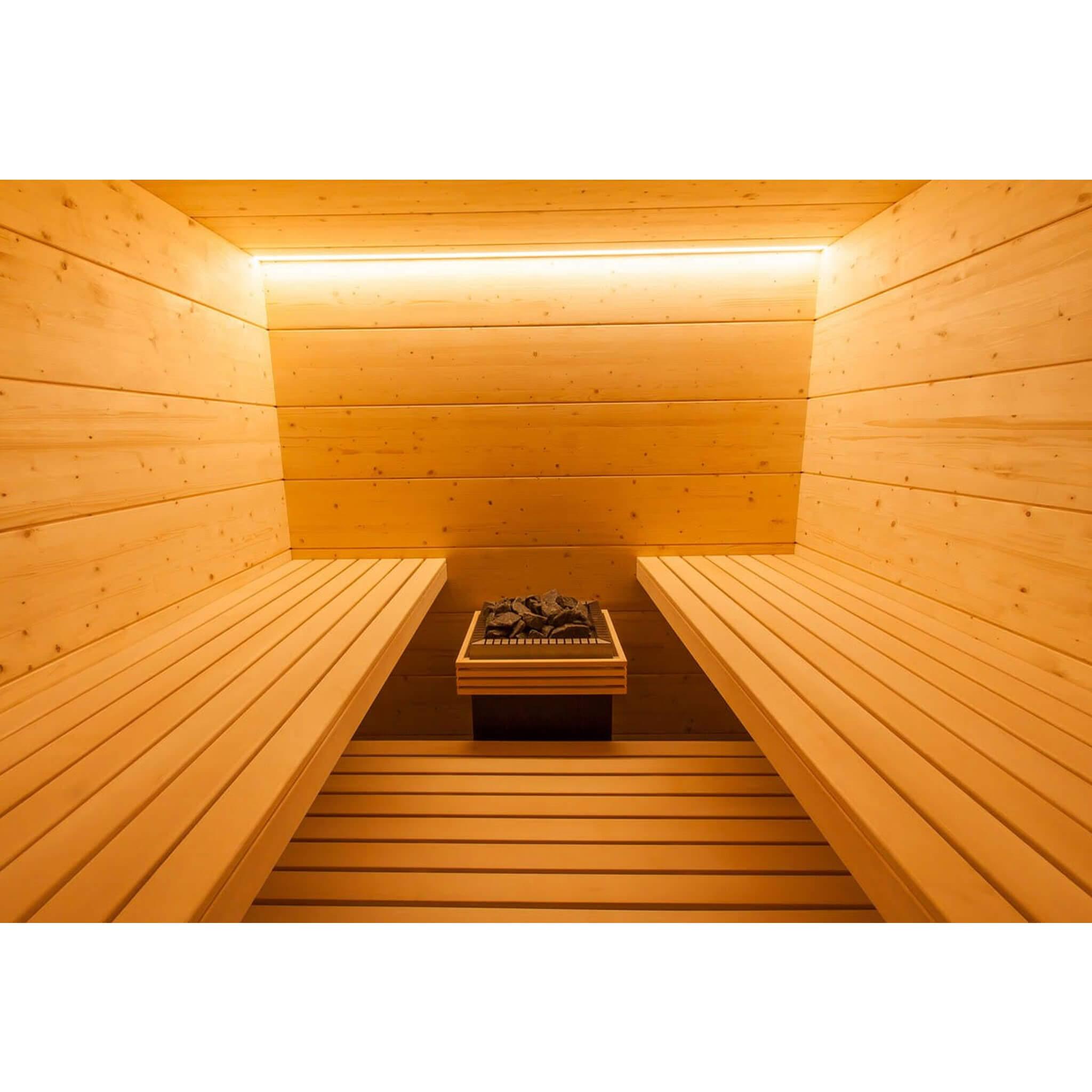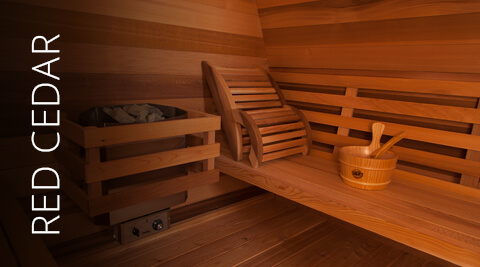3 Easy Facts About Traditional Sauna Explained
3 Easy Facts About Traditional Sauna Explained
Blog Article
The Ultimate Guide To Traditional Sauna
Table of ContentsWhat Does Traditional Sauna Do?Getting My Traditional Sauna To WorkSome Ideas on Traditional Sauna You Should KnowTraditional Sauna - The Facts
Most of the weight lost in a sauna is water loss and is re-gained upon rehydrating. Nevertheless, without an uncertainty sauna can be an essential part of a healthy and balanced weight reduction program. To take a look at the differences in between conventional and IR saunas, I will certainly separate these into proven, theoretical, and made distinctions.Therefore, the best factor in the saunawhich goes to the ceiling directly over the sauna heateris typically in between 185 and 190 F. Traditional Sauna. Claims that a typical sauna exceeds 200 F is simply not real and not suitable for electrical saunas sold in the United States. The temperature for a far-infrared sauna is typically set in between 120 and 140 F; nonetheless, unlike the standard sauna, the goal in and IR space is not to accomplish a high temperature
Due to this, the temperature distinction is virtually unnecessary, given that excessive sweating leads to both sauna types, yet the approach of warming the body is various. In an IR sauna the bather will feel hot and will certainly sweat a lot, however at much lower temperature levels. Thus, if the goal is to spend longer amount of times in the sauna, the IR sauna is a good selection.

The 30-Second Trick For Traditional Sauna
When the high temperature level is achieved, the components cycle on and off to maintain the high temperature level. The majority of typical sauna customers appreciate pouring water over the rocks to create heavy steam to raise sauna moisture levels. The advantages of pouring water over the rocks include: making the space much more comfy, moistening the nasal passages, and enabling the usage of aromatherapy by blending crucial oils with the water.
In a far-infrared sauna, the warm waves permeate the body to successfully heat up the body and elevate the body core temperature. To accomplish this raised temperature, Far-infrared emitters create infrared power which is close to the very same wavelength as that which the body naturally emitsoften referred to as the "Crucial Array" of 7 to 14 microns), so the power is well gotten by the body.
When the energy gets in the body, it causes the body temperature level to enhance and ultimately results in perspiration. In an infrared sauna it is necessary for the emitters/heaters to continue to be on virtually regularly. Given that there is no mass of rocks to maintain warmth, the sauna will certainly cool down if the emitters shut down.
As pointed out above, the sauna site web bather in an infrared room wants to place himself before running emitters to get maximum take advantage of the warmth. The home heating time for the two spaces can be really various, depending upon just how the areas are made use of. For a standard sauna, a bather should allow 30-40 mins for the room to attain a desired temperature and to appropriately pre-heat the rocks.
Traditional Sauna Can Be Fun For Everyone
A well built sauna will generally attain a temperature of 150-160 F in about 30-40 minutes. For hotter temperature levels, the room might require to warm for a longer duration.
To some, 15 mins was "squandered" while the infrared power heated the wood panels as opposed to heating a body, while others discover a pre-heated space to be much more comfortable and believe an elevated starting temperature level is required to start sweating. The length of recommended usage for every area is roughly the very same (10-15 mins per session); nonetheless, as a result of the lower click reference air temperature levels and the capacity to feel the impacts of infrared warmth much faster than a standard sauna, it is not unusual for a person to invest an overall of 20-30 mins in an infrared sauna.
Conventional saunas have a tendency to be larger (for this reason utilize more electricity) than infrared saunas, although traditional saunas are certainly offered in one and two person sizes. For a two-person traditional sauna, 5x6 or 5x7 dimension is most prominent. The top bench can conveniently seat two or three individuals and is additionally long enough to exist down during the sauna session.


The average cost per kWH of electricity in the united state is about $0.11, so a 4.5 kW heating unit will set you back around $.50 to run for one hour, if the heating unit runs continually for one hour. Normally a sauna heating unit will certainly run for 75% of the very first hour and 50% of subsequent hours on because the elements cycle once the set temperature level is attained.
Some Ideas on Traditional Sauna You Should Know
A 2 person far-infrared area is generally literally smaller sized than a traditional sauna, often about 4' x 4' or smaller. The IR heating system is generally 1.5-1.7 kW making use of a 120 volt 15 amp plug-in solution. Because the room can be used faster than a sauna area, we will certainly presume the space is made use of for to of an hour including heat up time.
There is a seldom gone over difference in the social experience between the 2 spaces. While our culture has actually lost several of the social benefit of the conventional sauna experience, it can read this be very socially rewarding. From household time in the sauna, to heart-felt discussions with substantial others, to sauna partiesthe conventional sauna experience can lead to intimate mingling.
The majority of higher end infrared rooms consist of tinted light treatment, noise systems and full-glass fronts.
Report this page